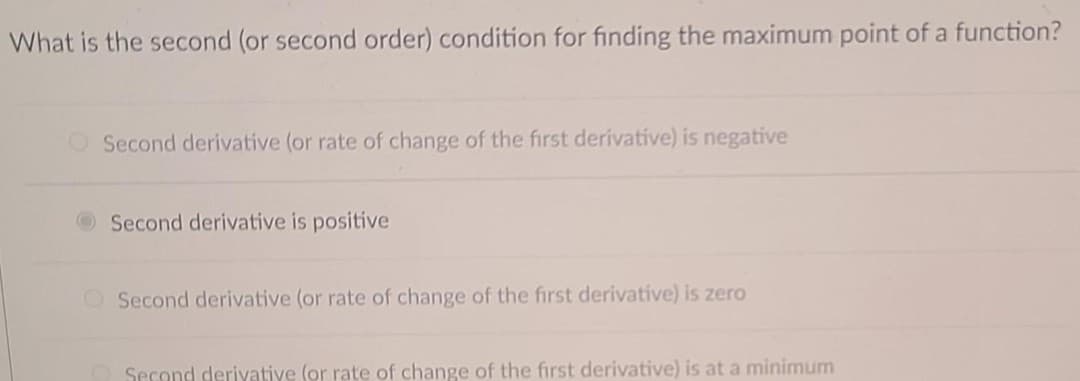What is the second (or second order) condition for finding the maximum point of a function? Second derivative (or rate of change of the first derivative) is negative Second derivative is positive OSecond derivative (or rate of change of the first derivative) is zero Second derivative (or rate of change of the first derivative) is at a minimum
What is the second (or second order) condition for finding the maximum point of a function? Second derivative (or rate of change of the first derivative) is negative Second derivative is positive OSecond derivative (or rate of change of the first derivative) is zero Second derivative (or rate of change of the first derivative) is at a minimum
Chapter9: Production Functions
Section: Chapter Questions
Problem 9.11P
Related questions
Question

Transcribed Image Text:What is the second (or second order) condition for finding the maximum point of a function?
O Second derivative (or rate of change of the first derivative) is negative
Second derivative is positive
OSecond derivative (or rate of change of the first derivative) is zero
Second deriyative (or rate of change of the first derivative) is at a minimum
Expert Solution
This question has been solved!
Explore an expertly crafted, step-by-step solution for a thorough understanding of key concepts.
Step by step
Solved in 2 steps

Recommended textbooks for you


Economics (MindTap Course List)
Economics
ISBN:
9781337617383
Author:
Roger A. Arnold
Publisher:
Cengage Learning



Economics (MindTap Course List)
Economics
ISBN:
9781337617383
Author:
Roger A. Arnold
Publisher:
Cengage Learning

